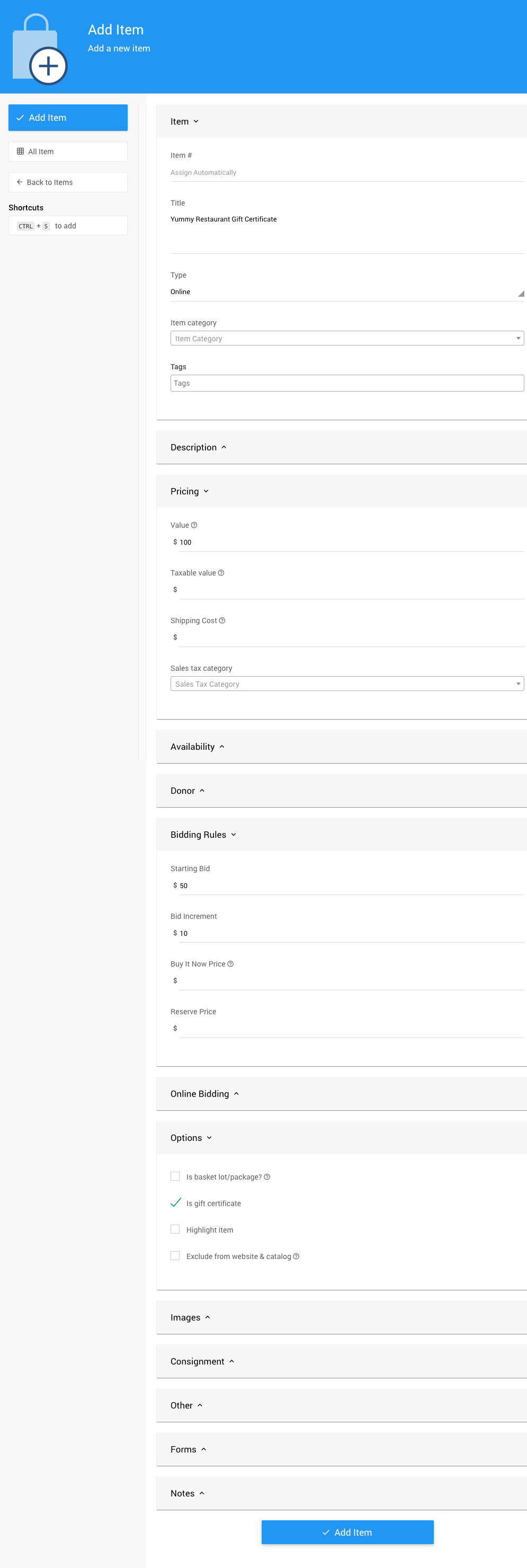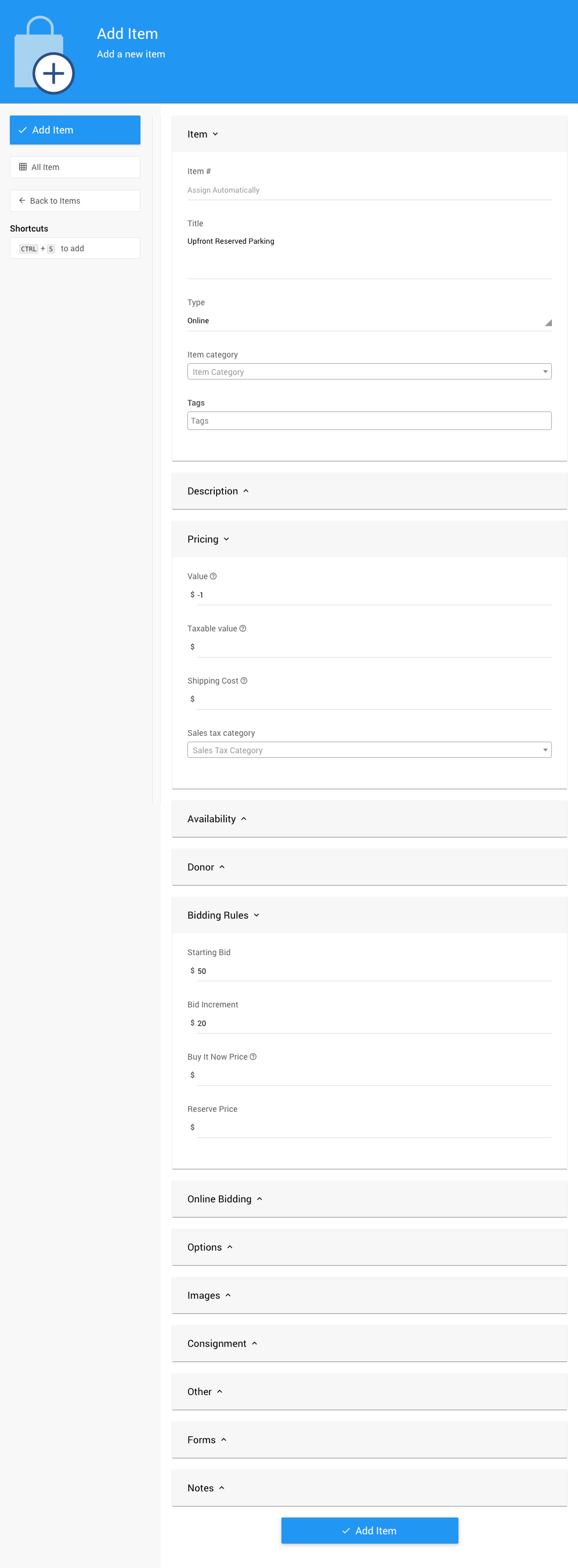Pricing Examples
Ordinary Goods and Services
Here are some general "rules of thumb" for pricing ordinary goods and services.
Start the bidding at about 40-50% of the retail "value", then divide the remaining value by 5 to engage a typical back and forth bidding exchange. For example:
- Yummy Restaurant donates a $100 gift certificate.
- Starting bid should be $100/2 = $40-$50.
- Bid Increments should be $50/5 = $10.

AUCTRIA has a built in all-auction Pricing Policy that can save you time by allowing you to set the Starting bid, Minimum bid increment, and Buy-it-now price for your auction items making this part of the process quick and easy for setup. This can work really well for Silent Items.
Unique and High Value Goods and Services
Unique goods and services, or those having a High Value, can be speculative in nature. Start the bidding price too high and there is the risk of getting no bids, start the bidding price too low and at auction close it might be purchased at an undervalued price.
Start the bidding at about 40%-60% of a realistic retail value and divide the remaining value in bite sized chunks to quickly elevate the donation. For example:
- A vacation package is donated with a retail value of $3,000.
- Starting bid should be be in the $1,200-$1,800 range.
- Bid increments should be be in the $75-$200 range.

High Value items do well at live auction, too. Live auctions permit impromptu modifications. If the Starting bid gets no activity, the auctioneer can immediately lower the starting bid and adjust it accordingly.
Keepsakes and Priceless
Tailor items that are "one-of-a-kind" keepsakes or local and/or priceless experiences. Exclusive auction items will garner interest to the overall event as well as the auction item itself. Keep in mind, the past buying practices for Starting Bids.
- Do create the image of exclusivity.
- Do create a description with lots of details.
- Do emphasize in the description how bidding on this auction item will delight the buyer.
- Don�t be apprehensive to start bid prices on these types of items a bit higher.
- Don�t start the the bidding at last year�s final sale price either. Leave room for the bidding process to start and flush out.
Keepsakes
A consideration to take into account with a Keepsake, is it valuable to only a subset of the audience?
For example, Mrs. Smith's classroom parents. If this is the case, start the bidding on the higher end but with smaller increments to draw bidders into the action and remain captivated. To capitalize on the rarity of the item, the description should be detailed and play up its sentimentality. If there are multiple types of keepsakes, such as, school projects, try to be consistent with the starting bid and let the market forces dictate the natural flow of bidding.
Here is an example for a simple "school" projects item:
- Each class created a coveted group art project.
- Starting bid should be consistent: perhaps $25-$30.
- Bid increments should also be consistent, perhaps $5-$10.
Here is an example for more complicated projects:
- Each class created a photo book that was created, and printed, costing $30.
- Starting bid should consider at least the cost for actual craft materials, +25-50% or more.
- Starting bid should be between $37-$45.
- Bid increments should be 20% of starting value.
- Bid increments should be between $8-$9.

Priceless
Priceless items are those that truly do not have a retail value but do have a utility or emotional value.
For instance, upfront reserved parking, front row seating at an event, or an opportunity that is out of the ordinary like "principal-helper-for-the-day". The priceless opening bid can be in the higher range. The bid increments should also be a bit larger in relation to general goods and services.
The total number of bidders for priceless items tends to be lower so make each bid increment count.
Here is an example:
- Upfront Reserved Parking, or Front Row Seating, at an event.
- Starting bid - $50.
- Bid increments - $20.

Auctria features a PRICELESS category, and pricing, for such activities. Listing an item as "Priceless" draws attention to the item. In Auctria, simply list the price as valued at -1 and Priceless will show on the website, and catalogs, for the item value. This has a two-fold benefit for the charity:
- the retail value is not artificially inflated on reports; and,
- the "Priceless" items can stand alone for marketing purposes.
NOTE
We gathered this information from past auction experiences with the basic principle of staying consistent with auction item types. Hopefully, this will bring you success! Please keep in mind these are only suggestions.
Last reviewed: June 2023